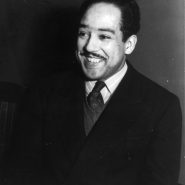By Robert Herrick
Gather ye rosebuds while ye may,
Old Time is still a-flying;
And this same flower that smiles today
Tomorrow will be dying.
The glorious lamp of heaven, the sun,
The higher he’s a-getting,
The sooner will his race be run,
And nearer he’s to setting.
That age is best which is the first,
When youth and blood are warmer;
But being spent, the worse, and worst
Times still succeed the former.
Then be not coy, but use your time,
And while ye may, go marry;
For having lost but once your prime,
You may forever tarry.
Originally published in Hesperides (1648) by Robert Herrick. Public domain.
Analysis
Robert Herrick’s “To the Virgins, to Make Much of Time” is one of the most enduring expressions of the carpe diem theme — the call to “seize the day.” Written in the 17th century, the poem urges young people, especially women, to embrace youth, beauty, and love before time inevitably brings decay. Herrick’s tone balances warmth and warning: he offers counsel rather than command, blending moral instruction with lyrical charm.
Imagery of Time and Transience
The opening line, “Gather ye rosebuds while ye may,” sets the symbolic frame of the poem. The rose, a classic emblem of youth and beauty, is fleeting — it blooms gloriously but fades quickly. Herrick expands this image through the sun’s daily journey: as the sun climbs higher, it moves closer to its setting. Both metaphors remind readers that life’s brightness is inseparable from its brevity.
Tone and Structure
The poem’s rhythm is steady and musical, with alternating rhymes that make it memorable and songlike. Herrick’s diction is direct yet elegant, inviting rather than didactic. Each stanza builds on the previous one — from the brevity of flowers, to the passing of the day, to the fading of youth — culminating in the moral imperative: “use your time.” The final stanza shifts from observation to advice, urging the virgins to act before opportunity slips away.
Themes of Youth, Mortality, and Choice
At the heart of the poem lies the tension between vitality and mortality. Herrick views youth as life’s prime season, “when blood is warmer,” and warns that hesitation leads to regret. His admonition “be not coy” carries both social and philosophical weight: modesty or fear may cause one to miss the fullness of living. The poem thus reflects a Renaissance worldview in which human happiness depends on harmonizing with, rather than resisting, the natural flow of time.
Herrick’s Humanist Philosophy
As a poet and clergyman, Herrick reconciles pleasure and morality through moderation. “To the Virgins” does not advocate recklessness, but mindful engagement with life’s fleeting joys. His verse reflects the Cavalier spirit — graceful, urbane, and tinged with melancholy. The closing couplet’s gentle finality (“You may forever tarry”) reminds readers that while youth fades, the wisdom to cherish it endures.
